![]()
Once
Upon a Gîte in Languedoc
by Bob Fisher
Making dreams come true — for example operating a self-catering vacation home in sublime Languedoc in the south of France — requires self-determination, communications skills, and an enhanced appreciation for human needs and culture. Oh, and vision too. So what's so difficult about that?
For the visitor to the dream, of course, it looks easy and seamless. That's the nature of the art. But for the dream makers, it can be a long road of hard work and a constant commitment to ideals.
At the end of one of those roads, I found Susan and Tim — again.
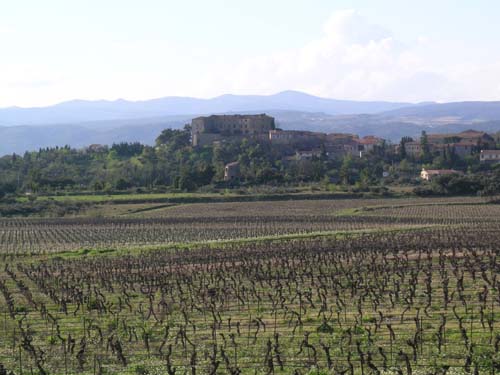
Now right off the bat, I need to let you know that Susan, Tim, and I are old friends; actually Susan and I have known each other since we were six years old, and we have been down some bumpy roads together.
We've been hither and yon, in many senses of the word, and over a half century, our lives have crisscrossed in some very interesting ways — a story I'll leave for another time.
But then, we lost each other for about six years. Furthermore, Canada Post almost erased our long relationship when a letter Susan sent to me at my last known address was returned in error with the curt message “No longer at this address.” But thanks to Mr. Google and Susan's obstinacy — and a little bit of concern that she offended me somehow — she tracked me down, and as they say, “Voilà!” There we were, together once again in Oupia — retracing our tracks.
Oupia? A blissful French village in the ancient region of Languedoc, and the ultimate escape from the hurly burly of the current century.
Layers of History in Languedoc
Where to begin? That is the delightful dilemma not only in Oupia but in the much larger context in which this little community is so ideally located. You may wish to begin by looking at France via the terrific Via Michelin website.
Zoom in on the south of the country (also called Le Midi.) Look to your left, west of Provence and the Côte d'Azur (which many people erroneously call The Riviera.) Zoom in a bit further until you see the eclectic cultural centres of Toulouse, Montpellier (Paris without the pressure), and Perpignan to the south. Note the mountain range to the north (la Montagne Noire), part of the Massif Central, the high plain in the middle of the country. Note also the strategic mountain range to the south, the elegant Pyrénées which form the natural boundary and defence mechanism that has kept France and Spain separate and distinct since the beginning of European civilization. With a little more digital dexterity, you can also find the Canal du Midi, an engineering marvel that solves the problem of “How are we going to get our stuff from the Atlantic by boat to the Mediterranean without going through the straits of Gilbraltar?” (It's also a UNESCO World Heritage Site.) Note also the ancient medieval walled city of Carcassonne, one of those once-in-a-lifetime-if-you're-lucky places to visit. See how close you are to the sea? A little more zooming and you will see the long stretches of beaches, sand dunes, and marshes. Unfortunately at this point in time Via MIchélin doesn't let you see the flocks of flamingos that gather on the coastline like a chorus of pink ballerinas; but I'm sure they're working on it. Now look a bit to the right of Carcassonne and there just off the autoroute is tiny Oupia minding its own business. Now consider this: where could you go within the space of a couple of hours and be home in time for an apéritif? Get my point?
And now some more geographical stuff. Languedoc is one of the former traditional provinces of the kingdom of France. They weren't officially provinces, just administrative units with no political structures; territories defined by custom and tradition and of course local dialects. The language of Languedoc was Occitan. Langue means language. Get it? Langue d'Oc. Oh, and oc means “yes.”
Being such loosely organized regions, it wasn't all that difficult therefore for the King of France to eventually bring them under his royal wing. Today the general area is classified under a broad category as the Languedoc-Roussillonregion. And... Oupia is also located in L'Hérault (capital city Montpellier), one of the original 83 départements created on March 4, 1790 during the French Revolution when the whole nation was being transformed and royal heads were going to Heaven or Hell in hand baskets. And to expand further on the geographic fine points, Oupia is also in the tourist region of Le Minervois (named after the very important city of Minerve). Le Minervois is a terre de contrastes, daring to straddle the two départements of L'Hérault and L'Aude.
And like the whole of Languedoc-Roussillon, Le Minervois is an enormously complex area historically and culturally. Topographically, it may initially look a bit like Provence, but on closer examination you will see that it has a much more subtle Mediterranean look and feel. Wild and wooly in places, calm and pastoral in others, Le Minervois is the focal point for the the entire area; a fact borne out by its connections to the rest of France via the Autoroute des Deux Mers (of the two seas) and the TGV (train de grande vitesse). And whether you are visiting Languedoc-L'Hérault-Le Minervois by automobile, bicycle, on foot, or even by houseboat, Oupia is just over there.
In modern times, the coastal Mediterranean area that is still referred to as Languedoc has been somewhat overlooked from the point of view of tourism, but it is no stranger to visitors. The area was settled and occupied by Greeks, Phoenicians, and Romans. I'll leave it to you to imagine what archeological treasures and cultural influences you will still see here. And Languedoc was also rudely invaded by the Alamanni, Vandals, Visigoths, and Saracens. In the 12th century, it became the centre of the “heretical” (at least in the eyes of the Roman Catholic Church) Cathar religious movement. You will learn more about them and the genocide that they suffered, during what was known as the Albigensian Crusade, when you visit the ancient and very poignant Cathar capital of Minerve. More lessons in history repeating itself; atrocities perpetrated in the good name of religion.
The Cathars believed that a divine light existed within the core of humanity but that it had been held captive by a corrupt material world created by a lesser deity. This lesser deity they claimed was the god that most people of the time worshipped, in essence an imposter. The real divine light or true creativity — the real human essence — was trapped in the flawed physical realm and overruled by corrupt minions. Well you can imagine what the powers that be, ecclesiastical and regal, thought of that. Believing also that reincarnation was a distinct possibility, the Cathars also believed that their struggle for ultimate spiritual freedom would be an ongoing one that would not end in their current mortal incarnation. With an emphasis therefore on the individual's having some control over his or her eternal destiny, Catharism started to gain ground. It was becoming a popular new understanding of the meaning of life, and consequently a major threat to the more hierarchical church. It was about choices. And it eventually was about silencing the heretics.
Today Languedoc still has a quiet spirit of self-determination. It is also one of the least-discovered areas of France where life is placid, the people benevolent, the landscape unspoiled, and the cuisine exquisite. And this is what Susan and Tim discovered.
Nuclear Energy in Oupia
Don't get excited; it's not what you think.What Susan and Tim have rediscovered is the quiet, subtle energy that lies at the heart of the village — the real nucleus of human society. How many times have we heard aphorisms such as “The only real change occurs in the village,” or “It takes a village to raise a child, ” or even the oft-repeated references to “the global village”? Such clichéd expressions enter our consciousness (and perhaps suffer from verbal overexposure) but it is because there is inherent truth in them. They communicate in very simple language very simple concepts — but also common sense and ideals. As I too rediscovered, the “simple life” in Oupia does not mean a simplistic existence, nor is it a one-dimensional experience. Au contraire mon cher. Like the pearl in the oyster, life in Oupia (not to mention other similar towns in southern France I have visited) is a process, not an event, and the result of unseen subtle forces that require time and privacy to make magic. And in this tiny medieval village, there is a distinct timelessness experienced not through cognitive powers but through the senses — like inhaling the permeating scent of wildflowers in the fields around the town.
And on a hill just outside Oupia stand tall, elegant, and pure white structures, their arms turning slowly in great powerful arcs in unison with natural forces. Yes folks; we're talking wind power! What a metaphor, and how appropriate to this unspoiled area of France. These great machines are definitely not to be tilted with; it would be a contradiction of terms. I'm sure Quixote would have found them quite landscape-friendy. I did, however, get the impression that the locals took them for granted — some even objected to their presence — but each time I ventured out of Oupia to discover some new gem, I would look forward to coming “home” to Oupia and being welcomed by the gentle giants. Maybe that's just my urban reverie and stress-sensitive psyche talking. Or maybe not.
Popping Down to the Local Chateau for a Minervois Blanc
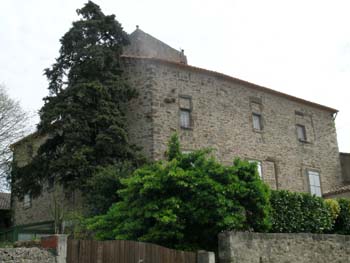
As small as it is, the village of Oupia has several focal points: the tiny town square, the cemetery overlooking the vineyards that surround the town, and the Château d'Oupia.
Also dating from the 12th century, Oupia's château was the property of the seigneurs of Oupia and has been a family business since 1860. The current occupant of the château and proprietor of the business is a very gentle man by the name of André Iché. With his small team of employees and other family members, he produces wines that you will want to import, let alone savour with a delightful Minervois déjeuner sur l'herbe of local cheeses, pâtés, and other delicacies. The château's 59 hectares (35 devoted to the A.O.C. appellation Minervois and 24 to vin de table et pays) produce award-winning and delicate wines at excellent prices. What is especially delightful is dropping by the chateau, as I did, for a chat with Monsieur Iché and his rather shy wife, and picking up something nice to go with the cheeses and other goodies Susan spends so much time choosing on market day.
And in Oupia, as it is in most of France, market day is a village affair, a ritual, an aesthetic adventure, and for the visitor, a chance to become even more acclimatized to Oupia, and the vaguely remembered way of life it offers the visitor.
Market Day and Other Rituals
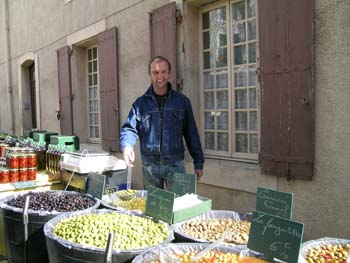
Susan takes me to Market Day in Olonzac. I carry one of the shopping containers and juggle my camera and micro recorder while following her around (at least initially) like a young kid on his first big trip “downtown.” Before long however, I find myself engaged in conversation with customers and vendors alike, a free-flowing communication that has none of the perfunctory “Have a nice day” tone or lack of substance I try to avoid in the marketplace back home. This village market — like all “farmer's markets” around the world — especially in rural France, is a microcosm of human society and of the idealized global village. It is a weekly reconnecting mechanism for the locals, a comfortable ritual of unhurried chatter, bisous hello and goodbye (the very French light kiss on both cheeks), street theatre in which the players, sets, setting, and roles are so closely intermingled that everyone is fully engaged in the “play.” It is an eons-old social event that creates cohesion and trust, and gets the business at hand done. And the fact that it is all about food and neighbourly nurturing gives the play its theme — the reaffirmation of human civilization. When we evolved from the hunter gatherer stage and settled primarily into an agricultural lifestyle, the next natural step was to establish the communal marketplace where human commerce began through bartering this for that. The people in this village market still live with and from the land, exchanging what they have once a week, and making a good living. And they talk about their produce, their cheeses, olives,organic bread, and whatever else has or has not happened in the last week. Food and language.
And oh the food! Real food! You buy the honey from the man who keeps the bees. The vegetable seller offers her produce as if she were asking you to admire her children. The chèvre probably comes from a nanny goat you have cycled past in the field. Being a suddenly sensitized urbanite, I don't want to know about the veal or the pâtés.
Now this may sound like a bit of a stretch, but stay with me. In a recent speech I heard, a guru of travel trends outline in very clear and logical language (with appropriate stats), how and why the travel industry has been revolutionized, thanks to a great extent by the Internet. He defined specific ways in which the consumers have taken back control of the products and services they buy. The number one issue is the “personalized travel experience.” Travel consumers today, like all consumers, are designing their own travel itineraries to fit their particular needs, for the most part online. And they choose travel products and services that are personalized to their tastes. And guess who in the very problematic airline industry is getting the business from these folks? The low-cost carriers, especially those who have re-created a culture of personalization and a return to a real dialogue with the customer. Well I'll be darned. Isn't that just like the village market in Olonzac!
Lunch à la minervoise in Cathar Country
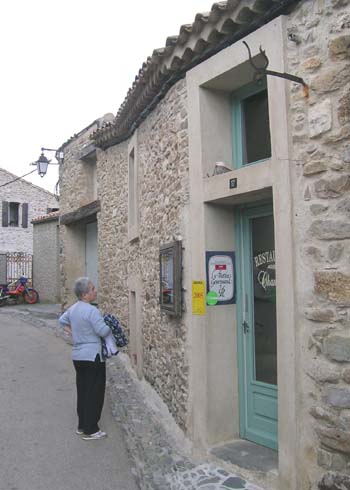
Lunch in Minerve at the Relais Chantovent (Windsong Inn) on one of the town's narrow winding streets was once again a taste of a culture that values food as an art form. And contiguous to that art form are the arts of décor and history. It is of course ironic, if not incongruous, that we should be dining so well in the town that witnessed a massacre and a genocide. However, one of the redeeming features of tragic history may be that some of the most beautiful and spectacular settings where turbulent events occurred are preserved and enhanced for the living; lest we forget. Walking the streets of this medieval town perched on a high rocky outcrop sculpted by millennial forces and the river in the gorge below, it is obvious why Minerve became the capital of the Cathars and their final retreat. It isn't just the views of Minerve from across the valley as well as outward from the heart of the town that create a profound perspective, it is the sense of timelessness in the place.
For more information on this special place read, click here.
For more on the Relais Chantovent click here.
Recycling in Oupia
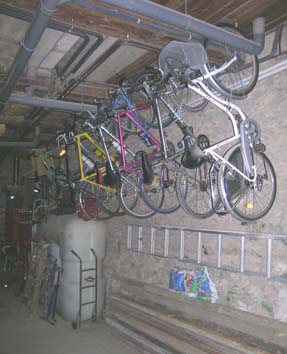
OK, I know I'm playing word games again here, but try to follow my thought process. Susan and Tim are avid cyclists and have been for quite a few years. Like yours truly, they are a couple d'un certain âge, but the passage of time, while not insignificant, is not a big deal. They both have the long lean look of passionate cyclists, those physical role models you see bent into the wind as they move silently and with grace along the side of the road. And they brought their cycling values with them when they moved to France; to what has to be one of the most cyclist-friendly areas of the world. And if you come to stay, you will be offered one of their “breakaway” bikes hanging patiently in the garage, which is actually an old wine-pressing workshop (pressoir). But don't worry; they won't force them upon you nor make you feel slothful if all you really want to do — as I did — is amble about the narrow lanes and alleyways of Oupia enjoying the délices of the town. Susan and Tim are passionate about cycling, but they're not fanatical. My point here is that in Oupia and the Minerve, you have choices, other modes of locomotion that will allow you to get up close and personal with the landscape and the people. And you will find that you will have little difficulty re-adjusting your rhythms to Oupia time and Oupia space.
Susan and Tim's passions are quiet ones, unobtrusive, almost imperceptible. Susan has a flair for hospitality and the decorative arts: the careful décor she has achieved in Lou Récantou and L'Ancien Pressoir demonstrates her Minervois feng shui and emphasizes the harmony and balance reflected in the landscape of Languedoc.
In a quiet chat one evening, Tim and I reflected on our educational and professional careers and how each ultimately proved quite secondary to the real vocations we eventually found. When it comes to the art and craft of design and renovation, Tim is the quintessential homme à tout faire. Quiet spoken but forthright (deeds speak) he also has a common sense vision and understanding of what really should go where and how to go about doing it. The evidence of course is the entire property which has structurally been transformed to the highest standards but has also remained faithful to the local architectural culture.
But if you are a cyclist, Tim and Susan are prepared for you. If you are an ambler or a rambler, they will also help you plan your serene activities on foot through the countryside.
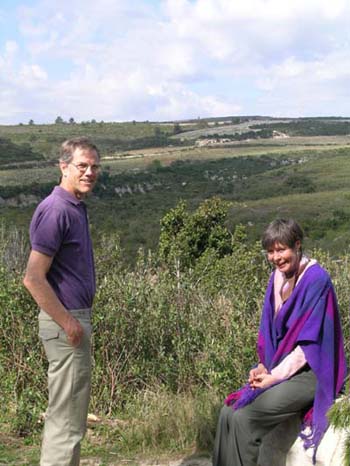
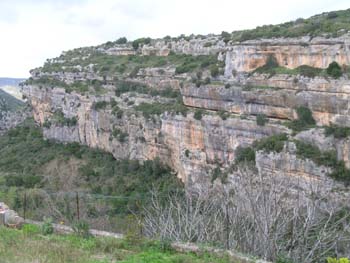
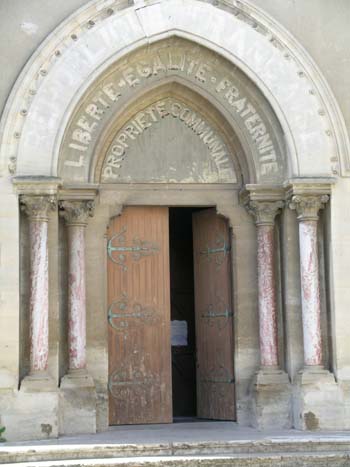
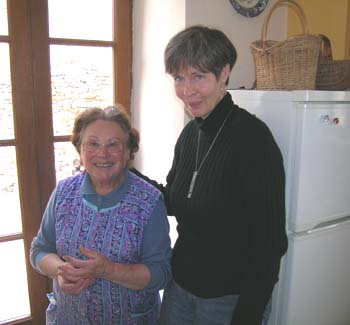
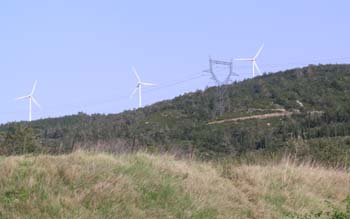
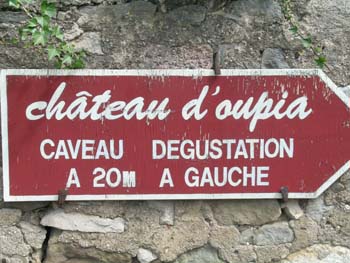
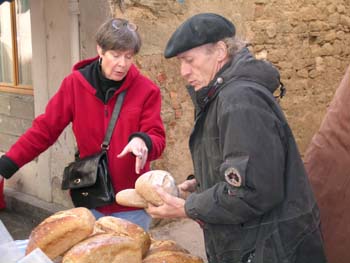
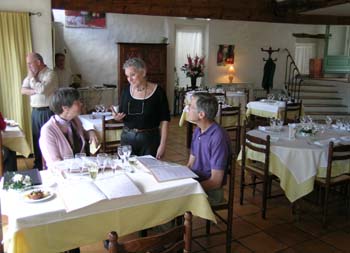
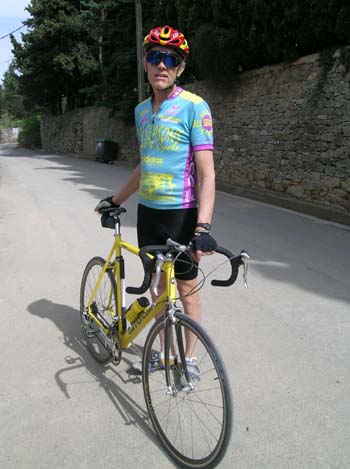
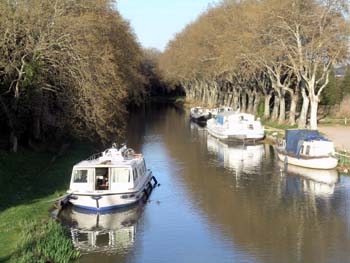
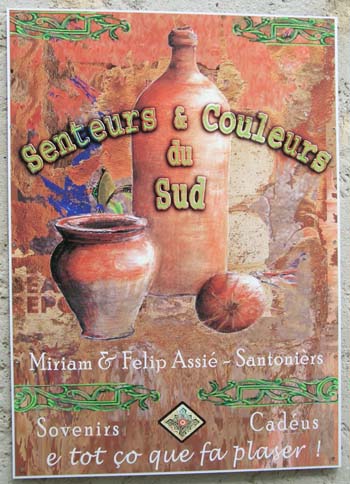
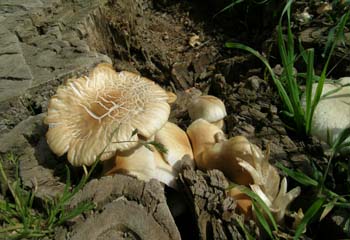
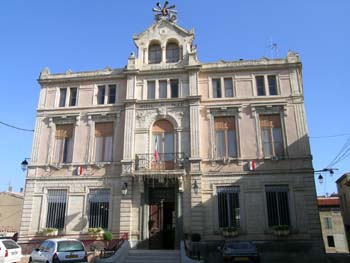
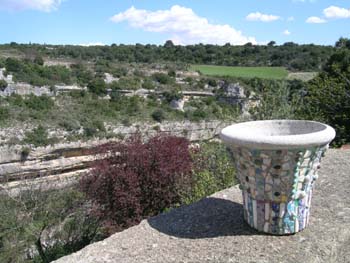
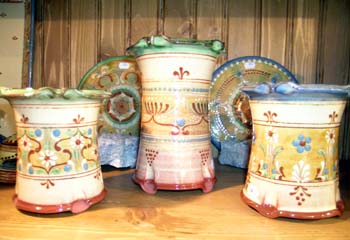
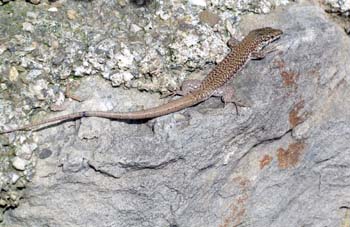
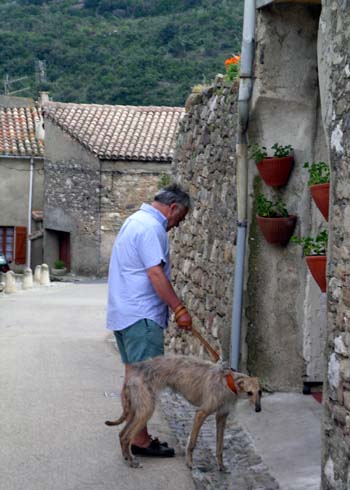
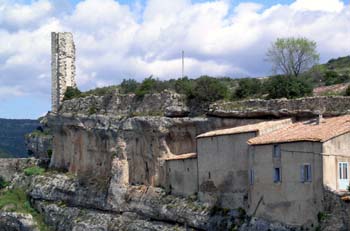
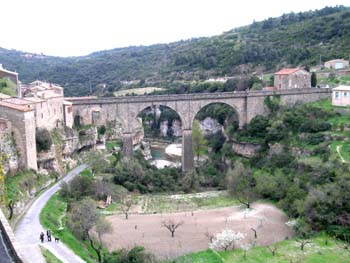
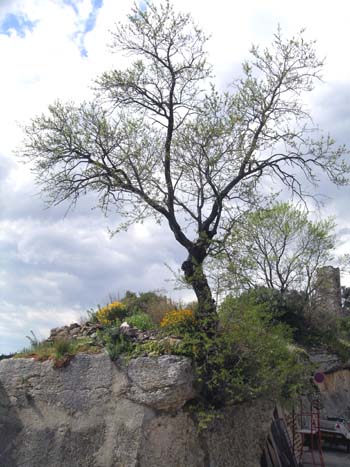
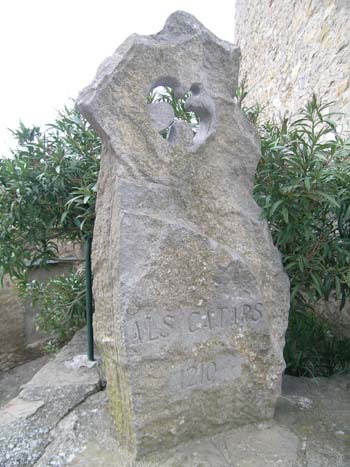
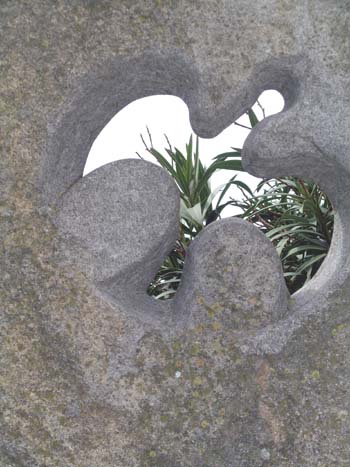
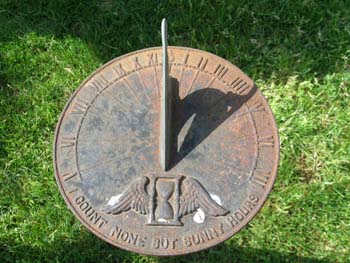
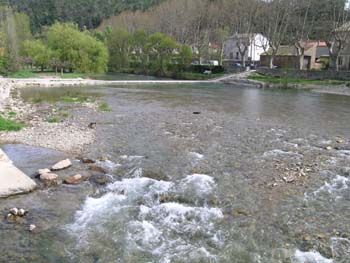
Along the Canal du Midi
It may surprise you, as it did me, how much European history is within easy reach of Oupia. The Canal du Midi, tangible evidence of Mediterranean empire-building, is today a delightful day's outing. Or if you are a lazy barger (no offense), you may wish to turn the outing into a multi-day excursion.
For more information on the Canal du Midi, click here.
If boating or barging on the canal strikes your fancy, click here or here.
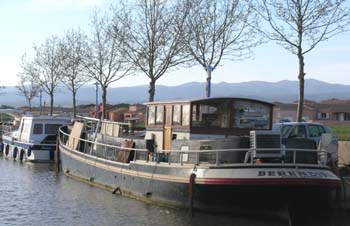
As If It Were Yesterday: Susan's Perspective
As we have done for more than half a century, Susan and I sat down to chat — about life in Oupia. Some things never change, thank goodness. The time and the context can vary but the fundamental issues and values remain. And as the clock that Susan has carried with her through all her peregrinations chimed softly in the background during our chat — resonance of time and space — it was a a gentle reminder of time well-spent.
You can listen
to our chat by clicking on the audio icon. ![]()
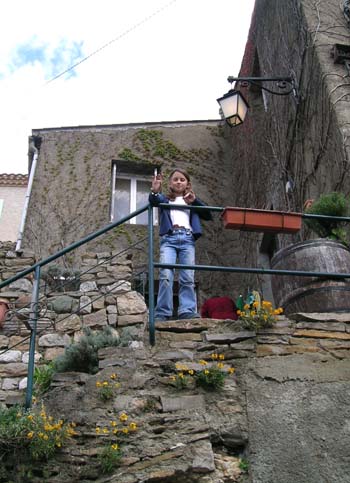
How to find Susan and Tim
Visit their website at Lou Récantou and L'Ancien Pressoir.
For more glimpses of Oupia and environs, click here.
To visit the market in Olonzac, click here.
Sweet market sounds
Market day in Olonzac is a multi-sensory experience. For anyone who loves France, there probably is no more Proustian sound than an accordion being played in the street. I met and spoke with Marek, a expat Pole who lives and plays in marketplaces and other venues in the south of France where he came for “le soleil” — the sun.
Recommended Excursions from Oupia
There are so many, but these are a few of my favourites, all within easy driving distance of Oupia.
- Minerve
- Carcassonne
- Narbonne
- Montpelier
- The Pyrénées
- Toulouse
- Nîmes
- Arles
- And if you like horses and wish to see Languedoc under saddle, I heartily recommend Pont de Calmel, about 20 minutes from Oupia.
Websites
For additional information on the area, consult the website of the Department of Tourism for L'Hérault
For more information on the extensive network of gîtes in France, see Gîtes de France.